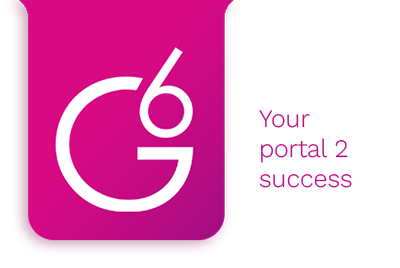Is your team struggling to find new leads? Or does your business need help targeting the right leads?
Several small businesses fail to generate the highest quality leads because they focus on other processes like social media marketing or lowering costs.
Hi, my name is AJ! Over the last decade, I scaled and (recently) sold my business for multiple seven figures.
I started Small Business Bonfire (SBB) to help small business owners like you. As my company grew, I quickly realized the importance of attracting and nurturing the right leads.
Keep reading to learn how to implement a lead generation strategy that will increase sales!
Key Takeaways
A lead is someone who has shown interest in your brand.
Lead generation is when a business focuses on attracting more potential customers to their brand.
Some strategies to secure leads include social media, email marketing, and direct mail.
Related Reading: Best CRM for Small Businesses
SBB Featured Partners
A lead is someone who shows interest in a business’s products or services.
Usually, companies reach out to leads after the individual initiates communication (submitting personal information).
Leads are part of the life cycle that aims to transition visitors to paying customers.
Therefore, managing and nurturing leads effectively is crucial for sales teams to generate sales and customer loyalty.
Lastly, there are three kinds of leads, including the following:
Marketing Qualified Sales Qualified Product qualified Service qualified
Here’s what you need to know about these lead variations!
Marketing qualified leads are prospects who have engaged with your company’s marketing efforts.
Still, these leads aren’t ready for sales tactics, like a call or product demonstration.
One example of an MQL is someone who fills out a landing form to receive a 15% discount for their first order.
Sales qualified leads are contacts who have expressed interest in purchasing your products or services.
For example, an SQL would request more pricing information.
These individuals are serious about purchasing something; typically, they want more information before buying.
Product qualified leads are contacts who have used your product and express interest in becoming a paying customers.
Typically, PQLs exist for companies offering a free or limited product version.
Lastly, there are service qualified leads.
These leads are contacts who have shown your service team that they’re interested in becoming a paying customer.
For instance, an SQL would tell a customer support rep they want to upgrade their product or service subscription.
Lead generation attracts and converts potential customers into someone interested in a company’s products or services.
The lead generation process involves different strategies to garner interest, such as through the following outlets:
Online contentSocial mediaEmail marketing campaigns
Further, the main goal of generating leads is to create a sales pipeline, amplifying the likelihood of turning prospective customers into paying ones.
Here’s how the online lead generation process (typically) goes.
Following this three-step process is essential to generate leads likely to convert to paying customers.
The first step in the lead generation procedure is when a potential customer, or “lead,” discovers your brand.
Someone discovering your company can occur through various channels, such as:
Social mediaOnline advertisementsWord-of-mouth recommendations Internet search
The second step in generating leads occurs when a prospect, intrigued by your brand, clicks on a call to action (CTA).
The CTA directs the lead to a landing page where they can learn more about what your business offers.
Some examples of CTAs include the following:
An enticing offerA downloadable resource A subscription button
The final step in this process is when the lead fills out a form on the landing page.
This step typically involves the lead providing their contact information in exchange for an offer, deal, or more information.
Therefore, these actions solidify their interest and allow your business to follow up effectively.
Are lead generation strategies essential for a business to be successful? Yes!
Sales and marketing teams must understand how to generate leads to boost sales.
Targeting the right customers can improve the efficiency and effectiveness of your marketing efforts.
Finding your target audience enables businesses to tailor their messages to a specific group more likely to be interested in their products or services.
Also, understanding and reaching the right customers can lead to the following things:
Increased customer satisfactionMore customer loyaltyHigher revenue and profitabilityMore sales conversions
Lead generation improves brand awareness by engaging a wider audience through various strategies like:
Social media marketingContent creationEmail marketing campaigns
These initiatives educate potential customers about the brand, products, and services and establish your company as a reputable business.
Then, as more leads interact with your content and share it within their networks, the visibility and recognition of your brand amplify, resulting in increased brand awareness!
Excellent prospect data offers invaluable insights into customer behavior.
As a result, businesses can tailor their marketing efforts for higher engagement and conversion rates.
Also, companies can design personalized marketing strategies that resonate with their target audience by understanding potential customers’ needs and interests.
Lead gen strategies foster brand loyalty by establishing and nurturing relationships with potential customers through personalized content.
This engagement, over time, promotes trust and positions your brand as a valuable resource, making leads more likely to choose your company when they’re ready to buy.
Also, an effective lead generation strategy includes follow-ups and customer retention practices that keep your brand top-of-mind, further solidifying customer loyalty.
Lead generation helps businesses scale by building a consistent pipeline of potential customers interested in their products or services.
A business can expand its customer base by continuously attracting and converting new leads.
As a result, this increases a company’s potential for revenue and growth.
Also, through proper lead data analysis, businesses can refine their offerings and target higher-value prospects, further enhancing their scalability!
Lead generation companies utilize numerous strategies to find potential customers for businesses.
Below, I’ve listed popular techniques for lead management.
SEO is helpful for companies because it ensures users can find their website, social profiles, etc., via search engines.
What is SEO?
SEO, or search engine optimization, is the process of enhancing a website’s visibility on search engines like Google, often through the following strategies:
Optimizing content with keywordsImproving site designBuilding high-quality backlinks
SEO Lead Generation Beneifts
The primary benefit of using SEO to find potential customers is that it makes your business easier to find on search engines.
For instance, even if someone isn’t looking for your website specifically, typing specific keywords could lead them to you!
SEO Pros and Cons
The pros of SEO lead generation include the following:
SEO is a cost-effective lead generation strategy. When your website ranks high in search engine results, you attract potential customers without additional costs.
On the other hand, a con of SEO lead generation is:
SEO is a process that takes time. It can take several months to see significant results.
Although SEO and SEM are similar, they’re different lead generation strategies that benefit companies.
What is SEM?
SEM, or search engine marketing, is a digital marketing strategy that promotes websites by increasing their visibility in search engine results pages primarily through paid advertising.
SEM Lead Generation Benefits
Some benefits of SEM include the following things:
It allows companies to advertise within search results It can increase website traffic It can drive leads and generate new sales
SEM Pros and Cons
The pros of SEM lead generation include:
SEM offers immediate visibility. Unlike SEO, which takes time to build, SEM can immediately put you on the first page of search results.
In comparison, a con of SEM lead generation is:
SEM can be expensive. You have to pay for every click in the pay-per-click model, and costs can add up quickly, especially for competitive keywords.
PPC means pay-per-click.
When someone says PPC, they’re referring to ads on search engines.
Companies that post ads on search engines pay each time a user clicks on their ad.
PPC Lead Generation Benefits
The primary benefit of PPC is that search engines are prime real estate for advertising.
Think about how many times you turn to a search engine to give you answers.
Now, think about how helpful search engines can be for consumers!
PPC Pros and Cons
The advantage of using PPC to find leads is that millions use search engines, meaning you can access plenty of new customers.
The drawback is that PPC relies heavily on target keywords and your budget.
Finding the right keywords is tricky, and some small businesses can’t afford PPC.
Email is one of the most popular lead generation tools because almost every consumer has an email address.
Email Lead Generation Benefits
There are several advantages of utilizing email for a lead generation campaign, including the following:
It’s easy to contact multiple people because most shoppers have emailIt’s an easy way for a sales team to find high-quality leads
Email Pros and Cons
The pros of using email as a lead gen strategy include:
Email offers valuable customer dataYour marketing team can automate these tasksThere is no financial commitment for the customersYou can include CTAs throughout your emails.
Regarding the cons, here’s what you should know about this strategy:
You can’t guarantee everyone will read your emailsCustomers may submit an old or fake email address
Content is an excellent way to generate leads and guide them toward a landing page.
Content Lead Generation Benefits
The benefits of using content to generate leads include the following:
It’s a valuable strategy.It contains free information (your prospects don’t need to pay to learn about your brand) It allows your company to be creative when generating leads.
Content Pros and Cons
The advantages of content lead generation include:
You can include CTAs anywhere in your content You can showcase your brand’s message, products, services, etc.
On the other hand, some downsides of this lead gen tactic include:
It may not bring in many high-quality leads Teams must continually alter the content to keep up with industry trends
Social media is one of the easiest ways to communicate with your target audience.
Some examples of social media platforms include:
Twitter/XInstagram LinkedIn Facebook Snapchat Reddit
Social Media Lead Generation Benefits
Some benefits of using social media to generate leads include:
It guides your followers to specific CTAs You can link social media posts directly to your website The platforms are free
Social Media Pros and Cons
The pros of using social platforms to find potential customers include:
You can collect and organize data about your customers You can reach several customer segments (and discover new ones) People can learn about your brand quickly
Regarding the cons, here are some aspects to note:
There are several spam accounts on social media platforms Some small businesses may get overwhelmed by the amount of data these platforms provide
Product trials are an excellent strategy to use to break down sales barriers.
Also, offering product trials shows potential customers you’re confident in what you’re selling.
Product Trials Lead Generation Benefits
Some benefits of offering product trials include:
Potential customers get first-hand experience using your product Product trials entice consumers to purchase add-on products or services
Product Trials Pros and Cons
Here are some pros of doing product trials to secure leads:
Customers (typically) make on-the-spot purchasing decisions It’s an excellent way for your sales team to connect with potential buyers
In comparison, here are the cons to be aware of:
Product trials are time-consuming Product trials can be difficult to do on a large scale
Blogging as a lead gen tactic is often overlooked.
Including in-depth articles on your company’s website has several advantages and helps first-time visitors learn more about your brand.
Blogging Lead Generation Benefits
Some of the benefits of utilizing a blog as a lead generation campaign include:
Teams can use blog posts to promote an offer. You can write an entire post to emphasize the end goal (purchase something) CTAs are easy to see and highly relevant.
Blogging Pros and Cons
Some pros of blogging include the following things:
It can boost your website’s SEO (search engine optimization) It helps potential and current customers learn more about your brandHighlighting products or services can foster deeper customer relationships
Regarding the cons, here are a couple of things to know:
People may not read the entire article thoroughly You may have to hire an outside source to create blog content
Referrals are also called word-of-mouth marketing.
Some sales experts consider referrals the most effective marketing tactic!
Referral Lead Generation Benefits
The benefits of generating high-quality leads through referrals include:
It gets your brand name in front of more people It increases your chances of generating more leads
Referral Pros and Cons
The advantages of utilizing referrals for lead generation include:
Referrals come from trusted sources such as friends, family, or satisfied customersReferrals are often an inexpensive way of acquiring leads
On the flip side, some of the disadvantages include:
Businesses have little control over who is referred and whenDepending solely on referrals can risk the flow of new leads
Attending or hosting events is an effective strategy to connect with your audience.
Also, this strategy helps your team find new leads who haven’t discovered your company yet.
Event Marketing Lead Generation Benefits
Some benefits of event marketing include:
You can meet face-to-face with potential customers Teams can nurture new contacts into qualified leads
Event Marketing Pros and Cons
The pros of event marketing extend to the following areas:
It provides a platform for real-time engagement with potential customers, fostering connections.It offers a unique opportunity to tangibly demonstrate your products or services, leaving a lasting impression.
On the other hand, the cons of event marketing include:
Events generally require a substantial investment of time and resources, which may not be feasible for smaller businesses.The return on investment can be unpredictable or difficult to measure, especially in the short term.
Community building is an excellent lead generation tool because it can turn visitors into leads.
An example of community building is including a knowledge hub on your website!
Community Building Lead Generation Benefits
Creating a community is beneficial for finding leads because potential buyers can get advice or recommendations from people who have used the product.
Also, community building fosters more meaningful customer relationships.
Community Building Pros and Cons
One notable advantage is that community building promotes customer loyalty and longevity.
However, there are also challenges associated with community building.
A significant drawback is that it can be time-consuming and resource-intensive.
Although physical mail isn’t as popular as before, it’s still effective when companies find qualifying leads.
Mailer Lead Generation Benefits
The benefit of using direct mail to find leads is that consumers have a hard copy of your company’s products and services.
Although technology is widespread, several people prefer a physical copy!
Mailer Pros and Cons
An advantage of mailers in lead generation is their tangible nature.
Unlike digital ads that can be easily ignored or forgotten, physical mail demands attention and can leave a lasting impression.
However, a significant drawback of direct mail is its cost.
Producing, printing, and mailing promotional materials can be significantly more expensive than digital methods.
Sometimes, people need a reminder about your brand.
That’s why retargeting is so powerful!
Retargeting Lead Generation Benefits
Some benefits of retargeting include the following:
It’s a proven strategy to convert warm leads It helps teams collect information about their target audience
Retargeting Pros and Cons
Retargeting efforts have several advantages, including the following:
Teams can automate this task. It helps separate the people who are actually interested in your products from those who are simply browsing.
On the other hand, some cons of retargeting include:
There’s the potential to irritate customers by constantly showing them ads.There’s a risk of overexposing your ads to people who have already decided not to purchase your product or service.
Video marketing content allows businesses to create engaging content that informs viewers about their products or services!
Video Marketing Lead Generation Benefits
A benefit of video marketing to secure leads is that it lets you get creative!
Consumers value creativity and authenticity, and video marketing allows you to showcase both characteristics.
Video Marketing Pros and Cons
An advantage of video marketing is its ability to engage audiences dynamically.
The audio-visual format can convey information more effectively than text.
Conversely, video marketing can be costly and time-consuming to produce, especially if you aim for high-quality content.
Podcasts have become an extremely popular way to attract new audiences.
Podcast Lead Generation Benefits
The main benefit of using a podcast to find quality leads is that they’re relatively inexpensive to start and offer a unique way to connect with consumers.
Podcast Pros and Cons
On the positive side, podcasts allow for deep dives into industry topics and trends, which can position your brand as an expert in the field and increase trust.
On the downside, creating a podcast requires a time commitment for recording and planning, production, and promotion.
Partnerships are an underrated way to find new leads.
Typically, when businesses are partners, their target demographic is the same.
Partnership Lead Generation Benefits
The benefits of partnerships to find leads include:
The strategies can be simple and inexpensive. The tactic allows businesses to display two logos or brands simultaneously.
Partnership Pros and Cons
The pros of partnerships for lead generation include:
Partnering with another business allows you to leverage their resources and customer basePartnerships can be cost-effective, as expenses for marketing initiatives can be shared between the two businesses
Here are the cons to be aware of:
If the two businesses have different objectives or ethical standards, it may lead to conflictsThere’s a risk that one partner might gain more from the partnership than the other
– AJ Silber
Below, I’ve listed everything you need to know about the lead funnel!
TOFU (Top of the Funnel) represents the awareness stage where potential customers begin recognizing their needs or problems.
MOFU (Middle of the Funnel) is the consideration stage where leads evaluate different solutions or products to address their needs.
BOFU (Bottom of the Funnel) refers to the decision stage where the leads are ready to convert into customers and are encouraged through free trials, demos, or consultations!
In the context of the lead funnel, awareness refers to the initial stage where potential customers become aware of a problem or a need.
This stage is often when consumers first come into contact with your brand through various marketing strategies or word-of-mouth referrals.
In the lead funnel, interest refers to the stage where potential customers seek more information about your company.
At this juncture, your marketing strategies should nurture this curiosity and interest, providing relevant content and demonstrating why your product or service is a suitable solution to their problem.
Drive is the stage where potential customers, having shown interest and developed a need for your product or service, are now driven to consider your offerings among the possible solutions.
It’s the stage where marketing strategies aim to transform that inherent interest into a strong desire to purchase your product or services.
Action is when the potential customer decides to purchase your product or service.
At this point, the prospect takes actions like adding an item to their cart or scheduling a meeting with a salesperson.
Conversion is the final stage in the lead funnel, where a potential customer completes a desired action or process, such as purchasing a product or service.
This action officially transforms from a lead into a customer!
Looking for ways to improve lead quality and campaigns? Don’t worry; I’ve got you covered!
Collecting and using data is crucial as it provides valuable insights into your audience’s behaviors and preferences.
Data allows you to tailor your lead generation strategies to reach and engage potential customers.
Using a customer relationship management (CRM) system can help you collect, organize, and analyze data for improved lead generation.
Considering the entire marketing funnel is essential as it allows businesses to understand and guide the customer journey, ensuring each stage is optimized for sales.
Although you may feel annoying at times, it’s crucial to consistently message and stay in touch with your contacts.
Oftentimes, consistent messaging will drive a prospect to purchase something!
Customers utilize various communication channels, meaning your business should do the same!
Utilizing multiple social media platforms and other communication strategies, like email marketing, ensures you reach every person in your target demographic.
Partnerships are valuable for each business involved.
With partnerships, you can get your brand name in front of more people.
Also, partnerships are an efficient way to strategize and implement new tactics with people outside your team!
Lead scoring technology is a must-have.
With lead scoring, you ensure your sales reps spend their time wisely because they’re going after the most qualified leads!
Consider a software development company that wants to increase its customer base and needs to generate more leads.
They decided to leverage content marketing as a lead generation strategy.
The company started a blog and posted articles related to software development, offering tips, tutorials, and industry updates.
Further, each blog post has a call-to-action (CTA) that encourages readers to subscribe to a weekly newsletter for more insights.
Simultaneously, they host webinars on topics relevant to their target audience.
To attend the webinars, interested parties must register on the company’s website, providing their email addresses.
The company uses these email addresses to send personalized follow-ups and promotional content.
The strategy here involves creating and sharing valuable, relevant content to attract, engage, and convert visitors into leads.
The company is then able to nurture these leads, eventually converting them into customers!
There’s all you need to know about lead generation!
Remember, lead generation is when companies attract and nurture potential customers.
The best lead gen strategy will draw high-quality prospects that match your target demographic!
What lead generation strategies will YOU implement? Let us know in the comments section!
The post What is Lead Generation? Guide for New Business Owners appeared first on Small Business Bonfire.
—
Blog powered by G6
Disclaimer! A guest author has made this post. G6 has not checked the post. its content and attachments and under no circumstances will G6 be held responsible or liable in any way for any claims, damages, losses, expenses, costs or liabilities whatsoever (including, without limitation, any direct or indirect damages for loss of profits, business interruption or loss of information) resulting or arising directly or indirectly from your use of or inability to use this website or any websites linked to it, or from your reliance on the information and material on this website, even if the G6 has been advised of the possibility of such damages in advance.
For any inquiries, please contact [email protected]




